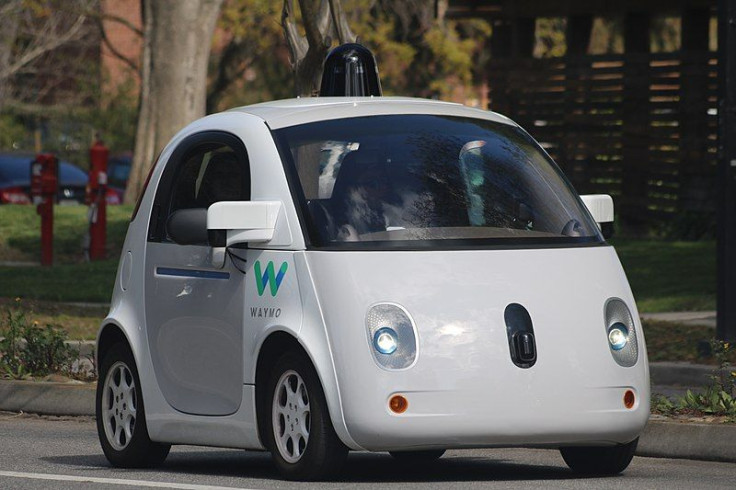The Future Of Cars: Passing The Time To Full Autonomy

For decades, the automobile industry has been about saving time. How to get from point A to point B faster. Thus, building faster and faster cars, in order to save time, was the original impetus of the development of automobiles and, in tandem, the highway infrastructure.
So, cars were made to go faster and faster and we built more and more highways but the fact we can only travel at ground level eventually led to congestion—too many people driving too many cars. After all, we live and work in 3-dimensional spaces – buildings with many floors. Getting to point B has become more difficult and more time consuming. Eliminating congestion has been a dream for many automotive visionaries. Elon Musk has talked about and even demonstrated tunnel with his " Boring Company " which would drop cars down into a one-way, just big enough to fit a Tesla, tunnel. The idea would be to build several “levels” of tunnels that would be able to get you where you wanted to go. A great idea to be sure. But you can imagine the costs involved and, of course, who is going to pay for it?
Another way to break the two-dimension barriers we are stuck with on earth is to take to the sky. Autonomous drones or flying cars. Logically, it would save time and reduce ground congestion because vehicles could fly on different “levels.” But, to me, this vision is less elegant because of how much energy it would take to keep flying cars afloat. But it is certainly a possibility for the future.
Is there a Goldilocks “middle” in the battle against congestion and the quest to save, or make the best use of our time? Yes. it is supposed to be the promise of autonomous vehicles but with the caveat that, through the prism of time, it’s not going to directly save any time, but it will free up time during a commute that can be used in a variety of ways. Read, get some work done, consume food or drink, sleep, it will be up to passenger to decide how to spend this freed up time. But it won’t have to be worrying about driving.
But we are nowhere near the dream of full autonomy yet. There were expectations that we would be by the year 2020. Many automakers bet on it and most are still working very hard on it. However, it seems that in terms of both safety and regulation we’ve still got a ways to go. It's probably going to take between two and four years more before we see it starting in small “geo-fenced” areas. But once it has started, it will proliferate from there and you will see bigger and bigger geographical spaces in which you would see Level 4 or 5 autonomous vehicles.
In the meantime, the compromise being currently made available to drivers is to increase the number of ways to make the task easier. We are seeing fierce competition today from automakers introducing various components of Advanced Driver Assistance Systems (ADAS)--things like Adaptive Cruise Control, Lane Keep Assist, Lane Departure Warnings, Automatic Emergency Breaking, etc. All these features will improve over time and can expect automakers to come up with additional features for ADAS. All designed to make driving less of a strain and improve the quality of time you spend in a vehicle.
And this is where in-cabin monitoring technology will come to the forefront in terms of driver assistance. Before you can utilize a feature like Lane Keep Assist, for example, it is important to understand whether the driver is alert enough to assume control of the vehicles. This understanding, along with other perceptions identified through driver monitoring, would allow the driver to take his/her hands off the wheel for more extended periods of time, like five seconds, 10 seconds, 20 seconds, according to the scenarios outside the vehicle and the scenario inside the car.
In the future, what’s being observed happening inside the car can bring about subtle changes to the car’s environment. Cars will become smarter and more aware of the occupants inside and initiate proactive responses that lead to a less stressful trip. It may involve understanding whether your children are acting out in the back or recognizing if the driver is showing signs of tiring, the car can respond with changes in the lighting and the music. Perhaps a driver is exhibiting signs of mental stress, being restless or nervous, and the vehicle can adapt accordingly. Through driver monitoring, these interactions can become more and more sophisticated by evaluating heart rate, temperature, the body pose, or facial expression. It could adjust the car’s temperature or communicate an offer to make a stop on the way, maybe to get something to eat or suggest the purchase of some media to better occupy the kids. Anything that would help the occupants according to their real-time status.
So, as things continue to progress along the path to autonomy, you’ll have more time in your vehicle, it will be much better spent. But we shouldn’t forget that safety has always been the priority when it comes to technology paying attention to what’s happening inside a vehicle. Safety is the table stakes for the interaction between people and their vehicles. But the gathering of insights from observing how humans behave in general when inside a vehicle will also bring about a much smarter two-way relationship with our vehicles. It’s about time.
Gil Dotan is the co-founder & CMO at Guardian Optical Technologies
© Copyright IBTimes 2025. All rights reserved.





















